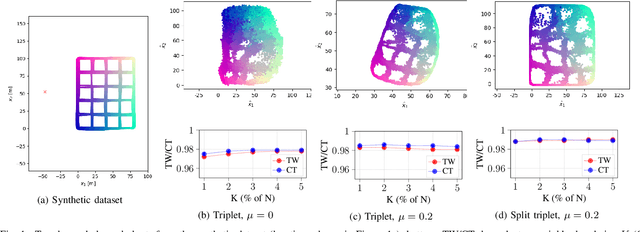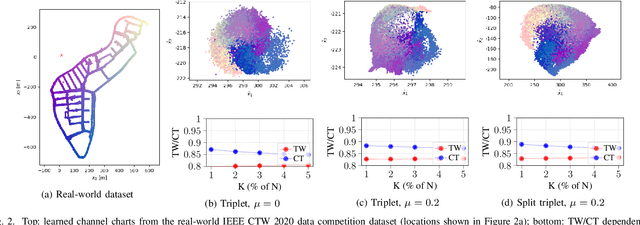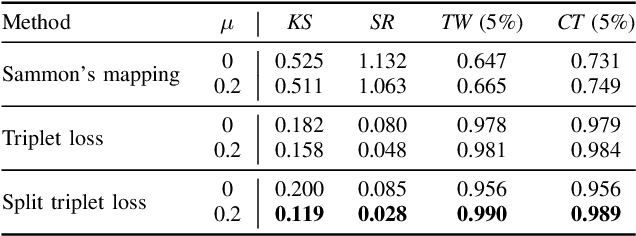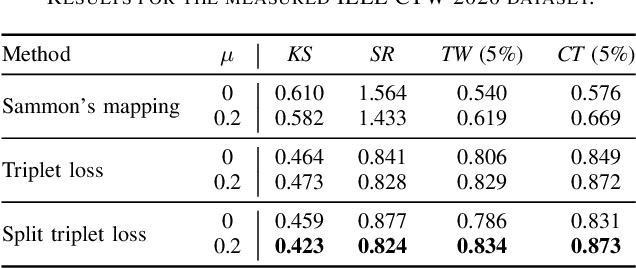Brian Rappaport
Improving Channel Charting using a Split Triplet Loss and an Inertial Regularizer
Oct 21, 2021



Abstract:Channel charting is an emerging technology that enables self-supervised pseudo-localization of user equipments by performing dimensionality reduction on large channel-state information (CSI) databases that are passively collected at infrastructure base stations or access points. In this paper, we introduce a new dimensionality reduction method specifically designed for channel charting using a novel split triplet loss, which utilizes physical information available during the CSI acquisition process. In addition, we propose a novel regularizer that exploits the physical concept of inertia, which significantly improves the quality of the learned channel charts. We provide an experimental verification of our methods using synthetic and real-world measured CSI datasets, and we demonstrate that our methods are able to outperform the state-of-the-art in channel charting based on the triplet loss.
* 6 pages, 2 figures
Multi-View Graph Embedding Using Randomized Shortest Paths
Aug 20, 2018



Abstract:Real-world data sets often provide multiple types of information about the same set of entities. This data is well represented by multi-view graphs, which consist of several distinct sets of edges over the same nodes. These can be used to analyze how entities interact from different viewpoints. Combining multiple views improves the quality of inferences drawn from the underlying data, which has increased interest in developing efficient multi-view graph embedding methods. We propose an algorithm, C-RSP, that generates a common (C) embedding of a multi-view graph using Randomized Shortest Paths (RSP). This algorithm generates a dissimilarity measure between nodes by minimizing the expected cost of a random walk between any two nodes across all views of a multi-view graph, in doing so encoding both the local and global structure of the graph. We test C-RSP on both real and synthetic data and show that it outperforms benchmark algorithms at embedding and clustering tasks while remaining computationally efficient.
Faster Clustering via Non-Backtracking Random Walks
Aug 26, 2017



Abstract:This paper presents VEC-NBT, a variation on the unsupervised graph clustering technique VEC, which improves upon the performance of the original algorithm significantly for sparse graphs. VEC employs a novel application of the state-of-the-art word2vec model to embed a graph in Euclidean space via random walks on the nodes of the graph. In VEC-NBT, we modify the original algorithm to use a non-backtracking random walk instead of the normal backtracking random walk used in VEC. We introduce a modification to a non-backtracking random walk, which we call a begrudgingly-backtracking random walk, and show empirically that using this model of random walks for VEC-NBT requires shorter walks on the graph to obtain results with comparable or greater accuracy than VEC, especially for sparser graphs.
 Add to Chrome
Add to Chrome Add to Firefox
Add to Firefox Add to Edge
Add to Edge